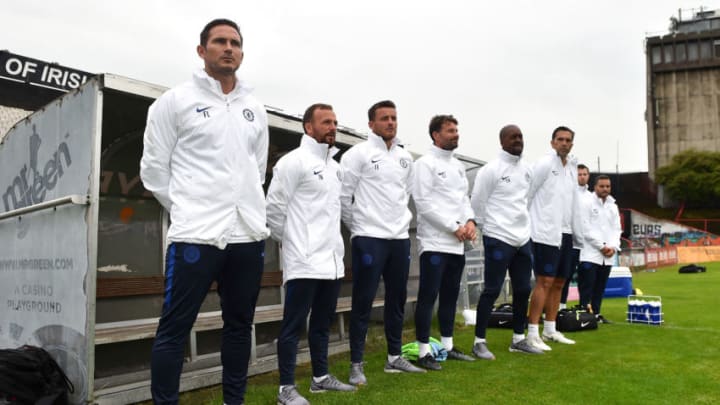Chelsea: Frank Lampard giving the Blues the right kind of player power
By George Perry

Frank Lampard is taking a different approach to coaching than his two circuit-based predecessors. Chelsea players have more freedom than they have in years, and are handling it quite well.
It turns out Chelsea FC can play fast-paced, flowing football without enacting strictly defined circuits from various textbooks. And they can even do it in preseason against an 11-man team, after spending last summer wowing simpletons with their fluidity in 7v0 and 10v0 full-pitch passing drills.
Chelsea have used three formations and four squads over their two preseason games in Ireland. The team played better in the two formations the club have not used in years – 4-2-3-1 (other than a few brief in-game periods under Antonio Conte) and 4-diamond-2 – than in Frank Lampard’s version of the one they played exclusively last season, the 4-3-3.
Circuit-based training is easy and not time-intensive for players at Chelsea’s level, but there is no way they could look this comfortable in three formations if Lampard was teaching them circuits. Players simply need more time to learn, practice and make routine those, well, routines. To play as smoothly as Chelsea did against Bohemians and St. Patrick’s Athletic, the players have to be making their own decisions and experimenting within a framework.
Matt Law of The Telegraph had an unusual but, once you get it, clever framework for drawing the contrast between Chelsea under the recent Italians and Frank Lampard. Law said the training mannequins are lonely. Whereas the players had plenty of opportunities to throw an arm around and lean against a mannequin during the instructional breaks under Conte and Sarri, Law says “there is no longer any hanging around, listening to long speeches or waiting to be told what to do.”
Law says the training sessions move from one drill to the next with no downtime, with Lampard doing most of the coaching himself.
The minimal explicit instruction on the training ground enables the variety of tactical and personnel options the Blues have shown over two preseason games. Training sessions are practice, not rehearsal. Lampard does not need to stop and tell them what to do on the next drill, or interrupt a drill if it is going other than plan. The drills are designed to elicit the response he wants from the player, the first response being their decision-making.
This is player power Chelsea can believe in.
Lampard is empowering the players to their football, which flows from the football they are learning on the training pitch. The players are in control of the movement-by-movement, pass-by-pass flow of the game.
They can play in a 4-2-3-1, 4-3-3 or 4-diamond-2 after one week because they are not learning those formations – they are learning how to make use of space, teammates and opponents to take control of the game, regardless of their shape on the pitch. The shape, like their training drills, provide the framework and constraints within which the players learn, play and develop Lampard’s gameplan.
This is important not just for the outwardly creative players like the wingers, but for players like Ross Barkley. Barkley works best when he is under the fewest explicit directions. His stand-out season at Everton under Ronald Koeman and his performances under Gareth Southgate for England show how well he can play when he has the freedom to make his own decisions in response to the game around him.
“We want to be adaptable, whether we need to change something in-game or for games,” Frank Lampard said after the game at St. Patrick’s Athletic. This adaptability demands a different training approach and a different philosophy of player-coach relations than Chelsea have had in some time.
There’s something of an old adage that when talented players are free to do what they want to do, they’re fully on-board with doing what they have to do: tracking back, pressing hard, going in for the tackle, winning second balls. This was the essence of Chelsea’s best seasons during Frank Lampard’s time as a player: fluidity and improvisation were right there alongside grit and grinding effort.
Next. Four lessons learned from Bohemians and St. Patrick's. dark
Lampard doesn’t need to order the players to put in the donkey work. So far, they seem more than willing to do it on their own. Small price to pay for learning their game at the next level.